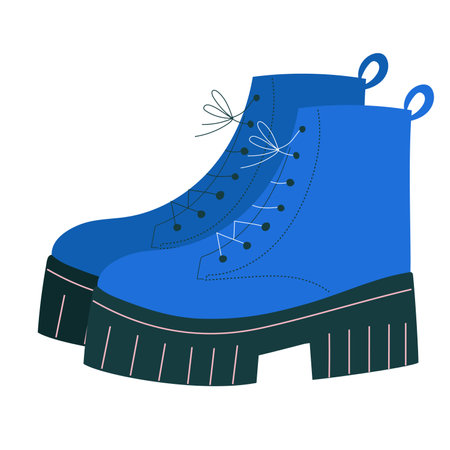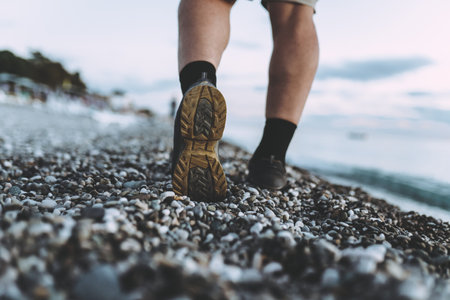1. Introduction: Adapting to the Seasons
When it comes to hiking in the diverse climates found across the United States, one thing is certain: your gear needs to adapt as the seasons change. From the humid forests of the Pacific Northwest to the arid deserts of the Southwest, and from Appalachian rainstorms to Rocky Mountain snowfields, American hikers face a full spectrum of weather conditions. The right accessories—especially gloves, gaiters, and socks—can be the difference between a safe, comfortable trek and a miserable slog. Seasonal changes bring new challenges: biting winter wind demands insulated gloves, while spring’s muddy trails call for waterproof gaiters. Even something as simple as sock choice can mean blister-free miles or raw, aching feet. This article dives deep into why these accessories matter for seasonal hiking and how making smart choices can help you thrive no matter what Mother Nature throws your way.
Gloves: More Than Just Warmth
When it comes to seasonal hiking, gloves do a lot more than just keep your hands warm. A true hiker knows that the right pair of gloves can mean the difference between comfort and misery, dexterity and numb fingers. The terrain and weather in the U.S. can swing from bitter cold in the Rockies to wet Pacific Northwest trails or sun-baked Southwest deserts, so your glove choice must be tactical and seasonally savvy.
Types of Hiking Gloves for Every Season
| Type | Season | Main Features | Top American Brands |
|---|---|---|---|
| Insulated Gloves | Winter/Fall | Thermal lining, windproof, bulkier build for heat retention | The North Face, Black Diamond |
| Waterproof Gloves | Wet Spring/Fall, Winter storms | Sealed seams, water-repellent membranes (Gore-Tex), quick-dry fabrics | Outdoor Research, REI Co-op |
| Breathable Gloves | Spring/Summer | Moisture-wicking, lightweight mesh or synthetic blends, vented designs | Mountain Hardwear, Patagonia |
| Touchscreen-Compatible Gloves | All seasons (tech-friendly) | Sensitive fingertips or conductive threads for device use on trail | Smartwool, Seirus Innovations |
Pitfalls of Poor Glove Choice
Selecting the wrong glove can be a rookie mistake that jeopardizes your grip on trekking poles or leaves you with soaked hands after a river crossing. In America’s diverse climates, flexibility is key—consider layering thin liners under waterproof shells for versatility. Many experienced hikers keep an extra pair in their pack as backup because even high-end gloves can get drenched or torn in tough conditions.
Tactical Tips for Trail-Ready Hands
- Palm Grip: Look for reinforced palms if scrambling over rocks is on your itinerary.
- Cuff Length: Extended cuffs shield against snow entry and brush scratches—especially in American alpine zones.
- Sizing: Fit matters—too tight restricts movement; too loose lets cold air and debris in.
A final word: invest in gloves from trusted outdoor brands with proven track records in American wilderness conditions. Don’t cut corners here; your hands are your primary tools when things go sideways on the trail.

3. Gaiters: The Unsung Shield
While often overlooked by casual hikers, gaiters are a game-changer for anyone serious about seasonal hiking across America’s diverse trails. These robust guards wrap around your lower legs and boots, forming a physical barrier against the environment’s worst—think mud, snow, grit, and even ticks. Let’s break down why gaiters deserve a spot in your pack, no matter where your boots hit the dirt.
Types of Gaiters: Fit for Purpose
Not all gaiters are created equal. For summer hikes on dusty Western trails or muddy Southern paths, lightweight ankle gaiters made from breathable fabrics keep pebbles and debris out without overheating your feet. Step up to mid-calf or knee-high waterproof gaiters when trekking through spring melt in the Rockies or tackling soggy Pacific Northwest trails—these keep rain, slush, and even early-season snow out of your socks and boots. For true winter conditions or mountaineering, heavy-duty insulated gaiters with reinforced panels shield you from deep powder and biting wind, an absolute must above treeline or on snow-packed routes.
The Function: More Than Just Debris Control
Gaiters do more than keep your socks clean—they’re a first line of defense against trail hazards. On Appalachian leaf-littered paths in fall, gaiters keep ticks and thorns at bay. In desert conditions like Utah’s red rock country, they block abrasive sand that can grind away at your gear over long miles. And after a freak Midwest thunderstorm? You’ll be grateful for that waterproof seal keeping out puddle splash and sticky mud.
Trail-Specific Relevance Across the US
The American backcountry is nothing if not varied. In the Rockies, high-altitude hikers rely on tall, weatherproof gaiters to handle unpredictable snowfields—even in late June. Out East on the Appalachian Trail, it’s all about tick prevention and dealing with the notorious “Appalachian mud.” Heading south? Low-profile gaiters protect against chigger bites and brambles in the Ozarks or Smokies. The bottom line: match your gaiter to your region’s threats and you’ll hike smarter—and safer—all year long.
4. Socks: Your First Line of Defense
When it comes to hiking, socks aren’t just a minor detail—they’re your primary defense against blisters, moisture, and cold. Seasoned American hikers know that the right pair of socks can mean the difference between a comfortable trek and a miserable ordeal. Lets break down why sock material and construction matter, especially across changing terrains and temperatures.
Choosing the Right Material for the Season
| Material | Best For | Key Benefits | Potential Drawbacks |
|---|---|---|---|
| Merino Wool | Year-round, all terrains | Excellent moisture-wicking, regulates temperature, odor-resistant | Can be pricey; dries slower than synthetics |
| Synthetic (Polyester/Nylon blends) | Wet or humid conditions, summer hikes | Dries quickly, durable, lightweight | Less odor control; may retain heat in summer |
| Cotton (not recommended) | N/A for hiking | Comfortable for casual wear only | Absorbs moisture, causes blisters; slow to dry |
| Silk or Silk Blends | Liner socks for layering in cold weather | Very lightweight, smooth against skin, reduces friction | Less durable alone; best as liners only |
The Construction Factor: Not All Socks Are Built Equal
- Cushioning: Look for targeted padding at the heel and ball of the foot for rocky trails. Minimalist socks with light cushioning excel in hot climates or fast-paced hikes.
- Seamless Toes: Prevent hotspots and reduce friction—critical for long-distance treks.
- Height: Crew and quarter socks protect against debris and abrasion from boots, while ankle styles suit trail runners in mild conditions.
- Compression Zones: Arch support bands improve fit and help prevent bunching inside your boots.
Blister Prevention: Lessons from the Trail
No one knows about blister prevention like veteran US hikers. Their number one rule: never hike in cotton. Instead, they swear by merino wool or synthetic blends paired with proper fit—snug but not tight. Many also recommend wearing liner socks under thicker hiking socks in colder months to reduce skin friction and wick away sweat faster.
Tried-and-True Recommendations from US Hikers:
- Darn Tough Vermont: Legendary durability and lifetime guarantee—popular on the Appalachian Trail.
- Smartwool Hike Series: Trusted for year-round comfort and performance.
- Balega Blister Resist: Excellent for those prone to hotspots, especially on rugged Western terrain.
- Injinji Toe Socks: Favored by ultralight backpackers to prevent between-toe blisters.
Your socks are your first line of defense against discomfort on the trail. Invest in quality materials and smart construction—your feet will thank you after every mile.
5. Layering and Combining Accessories
Mastering the Art of Layering for American Trails
If you’re serious about seasonal hiking in the United States, understanding how to layer and combine your gloves, gaiters, and socks can make or break your experience on the trail. The right strategy not only keeps you comfortable through shifting weather, but also adds a critical layer of safety against blisters, frostbite, or even snake bites in certain regions.
Gloves: Building a Versatile Hand System
Start with a thin, moisture-wicking liner glove—think Merino wool or a synthetic blend. This base moves sweat away from your skin, keeping hands dry during intense climbs or humid conditions. Add an insulating mid-layer (like fleece) when temperatures drop or wind picks up. Finally, pack a weatherproof shell glove to block rain, snow, or harsh wind. Modular packing means you can stash or don layers as needed based on real-time conditions out west in Colorado or deep in the Smokies.
Socks: Prevent Blisters and Maintain Warmth
Smart hikers know that sock layering is non-negotiable for long treks. Start with a lightweight synthetic or wool liner sock to minimize friction and wick moisture. Over this goes a thicker hiking sock for cushioning and warmth—crucial for those cold mornings in Yosemite or rainy days on the Appalachian Trail. If forecasts call for extreme cold, double up with an extra insulating sock but be careful not to restrict circulation.
Gaiters: Defend Against Debris and Weather
Gaiters are your first line of defense against mud, snow, scree, and even ticks or snakes—common threats across various U.S. terrains. For summer hikes in dusty conditions, use low-profile gaiters over your socks and boots to keep grit out and reduce abrasion risk. In winter or wet shoulder seasons, opt for waterproof gaiters layered over insulated boots and thick socks to lock out moisture and biting cold. Adjust as needed; modularity is key.
Modular Packing: Adaptability is Survival
The real secret weapon? Modular packing based on updated weather forecasts. Before each trip, check local trail reports and NOAA updates. Build your accessory kit so you can mix-and-match components—stash liners in your hip belt pocket, keep shells accessible at the top of your pack, and always have an extra dry pair of socks sealed in a ziplock bag. This flexibility lets you adapt instantly if a sunny California hike turns into a Sierra hailstorm.
In Summary
Layering and combining gloves, gaiters, and socks isn’t just about comfort—it’s about staying one step ahead of unpredictable American wilderness. Master these techniques, pack with modularity in mind, and you’ll be prepared to tackle any season on America’s greatest trails.
6. Care, Maintenance, and When to Replace
Your hiking accessories—gloves, gaiters, and socks—are your frontline defense against the elements. Treat them right, and they’ll serve you well season after season. Neglect them, and you’re risking blisters, wet feet, or worse: a gear failure miles from help. Here’s how to keep your essentials in peak condition and know when it’s time for a replacement.
Cleaning: Keep It Functional
Never toss your gear in with your regular laundry without checking the care label first. Use mild detergent and cold water to protect technical fabrics. Avoid bleach or fabric softeners—they break down fibers and ruin water-repellent coatings. For gloves and gaiters, hand-washing is often best. Socks can usually go in the wash, but always turn them inside out to get rid of sweat and skin oils that degrade performance fibers.
Pro Tip:
Always rinse mud and grit off gaiters before washing—grit can wear down waterproof membranes fast.
Drying: Don’t Rush It
No matter how tempting, skip the dryer for most hiking gear. High heat can shrink or warp synthetic materials. Instead, air-dry flat on a rack, away from direct sunlight which can degrade fabrics over time. If you’re drying in the field, hang items where there’s airflow but not blazing sun.
Pro Tip:
Stuff socks and gloves with dry newspaper to wick out moisture faster—especially crucial if you need them for another day’s hike.
Storage: Stay Organized
Store gloves, gaiters, and socks clean and bone-dry in a cool, dark place. Keep pairs together so you’re not scrambling before a trip. Use breathable mesh bags instead of airtight containers to prevent mildew or funky smells.
Pro Tip:
Toss a silica gel packet (the kind from shoe boxes) in with your stored gear to absorb any lingering moisture.
When to Retire Your Gear
If you want to avoid catastrophic failures on the trail—like blown-out seams or threadbare toes—inspect your accessories regularly. Replace gloves when you see holes forming at the fingertips or if insulation packs down flat. Swap out gaiters when straps are cracked or Velcro loses its grip; torn fabric means lost waterproofing. Socks should be retired once you spot thinning at the heel or ball—the next step is a blister waiting to happen.
The Bottom Line:
Being proactive about care and knowing when to replace your hiking accessories isn’t just about comfort—it’s about safety and survival on unpredictable American trails.
7. Conclusion: Be Ready for Anything
When it comes to seasonal hiking, being properly outfitted with the right gloves, gaiters, and socks isn’t just about comfort—it’s about survival and self-reliance. American outdoor culture is rooted in a spirit of adventure and preparedness, and every hiker owes it to themselves to respect the wild by gearing up accordingly. The trails can be unpredictable; sudden weather changes, muddy paths, or frigid mornings demand that you’re always ready to adapt. Invest in quality accessories and learn how each item supports your journey through varied terrain and changing seasons. Don’t wait until you’re miles from the trailhead to realize what you’re missing. Take ownership of your preparation now: review your gear list, update your essentials as conditions shift, and test everything before setting out. In the end, being ready for anything isn’t just smart—it’s what keeps the American hiking tradition alive. So pack up, stay sharp, and hit the trail with confidence—your next adventure depends on it.

